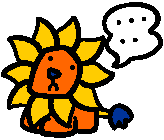
------------------------------------------------------------
#49 工場式畜産とは何ですか? どこがいけないと言うのですか?
------------------------------------------------------------
工業製品の大量生産の考え方と方法論を畜産の世界に持ってきたもの
が工場式畜産です。そこでは動物達は個々の感覚を持つ存在ではなく卵
や肉や革といった製品を生み出すための単なる手段と考えられます。工
場式畜産の目的は生産量と利益を最大限にすることです。
繁殖や給餌や密閉飼いや化学薬品の投与等の手段によって動物達は少
しでも早く卵を産むように、早く太るように、脂肪の少ない肉をつける
様に管理されます。コストを最小限におさえるために屠体を餌として再
利用したり、限られた空間にできるかぎり詰め込んで飼ったり、寝わら
を与えなかったり(汚れて掃除する手間がかかるから)等々の事が行わ
れています。
工場式畜産の最も有名な例はおそらく鶏のケージ飼いによる卵の生産
でしょう。鶏はほとんど身動きもとれず、鶏にとって自然な行動をとる
事もできない小さなケージに閉じこめられます。
窮屈なケージの中で鶏達がお互いを傷つけるのを防ぐために鶏はくち
ばしの先を切られます(これは苦痛を伴います) 時には爪もぬかれま
す。ケージにはゆかと呼べるものはありません。糞便がトレイまで落ち
る様にするためです。そのため鶏はワイヤーの上に立つ事を余儀なくさ
れます。
鶏を入れたケージは積み重ねられて長い列を作り空調をコントロール
された小屋の中に置かれます。短い、みじめな人生が終わると鶏達はス
ープの素か他の家畜の餌にされます。
豚の飼育においても工場式畜産の典型的な手法がとられます。
「最高の」豚肉を作るため、豚はほとんど身動きもできず、わらも敷かれ
ていないコンクリートの囲いに閉じこめられます。豚が子供を産むと母
豚と子豚は別の囲いに入れられます。子豚が唯一ふれる事ができるのは
母豚の乳首だけです。
肉用の子牛の飼育もそれと同様の監禁状態の中で行われます。子牛は
体の向きを変えることもできない狭いおりの中に閉じこめられます。彼
らにできる事は立っているか横になるかだけです。子牛は他の動物との
接触もないまま暗い中におかれます。
工場式畜産において動物達は空間面でも行動面でも他の動物とのふれ
あいという面でもきわめて不自然な状態におかれています。動物達がこ
のように扱われているという事実は人々を悲しい気持ちにさせます。
動物達をこうした境遇に置く事は動物に対して残酷な行為であるだけ
ではなく生産から消費に至るまでこうした行為に関わるすべての人間の
人間性を損ねることにもつながります。
つけ加えて言えば生産量をふやしたり病気を予防したり成長を早めた
りする目的で動物に対して使われている化学薬品やホルモン剤も人間に
対して有害である可能性があります。
JK
参照:
#12、
#14、
#32、
#48、
#50

...............



-----------------------
#49 What is factory farming, and what is wrong with it?
-----------------------
Factory farming is an industrial process that applies the philosophy and
practices of mass production to animal farming. Animals are considered not as
individual sentient beings, but rather as a means to an end--eggs, meat,
leather, etc. The objective is to maximize output and profit. The animals
are manipulated through breeding, feeding, confinement, and chemicals to
lay eggs faster, fatten more quickly, or make leaner meat. Costs are
minimized by recycling carcasses through feed, minimizing unit space, not
providing bedding (which gets soiled and needs cleaning), and other
practices.
Battery-hen egg production is perhaps the most publicized form. Hens are
"maintained" in cages of minimal size, allowing for little or no movement
and no expression of natural behavior patterns. Hens are painfully debeaked
and sometimes declawed to protect others in the cramped cage. There are no
floors to the cages, so that excrement can fall through onto a tray--the hens
therefore are standing on wire. Cages are stacked on top of each other in
long rows, and are kept inside a climate-controlled barn. The hens are then
used as a mechanism for turning feed into eggs. After a short, miserable life
they are processed as boiler chickens or recycled.
Other typical factory farming techniques are used in pig production, where
animals are kept in concrete pens with no straw or earth, unable to move more
than a few inches, to ensure the "best" pork. When sows litter, piglets are
kept so the only contact between the sow and piglets is access to the teats.
The production of veal calves is a similar restraining process. The calves are
kept in narrow crates which prevent them from turning; they can only stand or
lie down. They are kept in the dark with no contact with other animals.
Factory farming distresses people because of the treatment of the animals;
they are kept in unnatural conditions in terms of space, possible behaviors,
and interactions with other animals. Keeping animals in these circumstances
is not only cruel to the animals, but diminishes the humanity of those
involved, from production to consumption.
In addition, the use of chemicals and hormones to maximize yields, reduce
health problems in the animals, and speed production may also be harmful to
human consumers.
JK
SEE ALSO: #12, #14, #32, #48, #50




